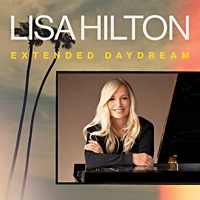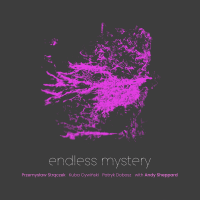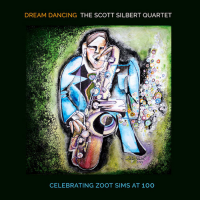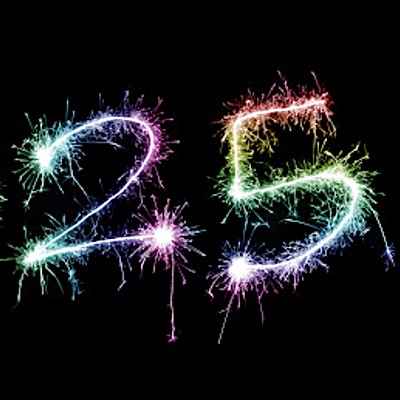Home » Search Center » Results: Roy Eldridge
Results for "Roy Eldridge"
Results for pages tagged "Roy Eldridge"...
Roy Eldridge

Born:
Roy David Eldridge was a jazz trumpet player in the Swing era. His sophisticated use of harmony, including the use of tritone substitutions, resulted in him sometimes being seen as the link between Louis Armstrong-era swing music and Dizzy Gillespie-era bebop. Roy's rhythmic power to swing a band was a dynamic tradmark of the Swing Era. Eldridge was born in Pittsburgh, Pennsylvania. His nickname was Little Jazz. Eldridge played in the bands of Fletcher Henderson, Gene Krupa and Artie Shaw before making records under his own name. He also played in Benny Goodman's and Count Basie's Orchestras, and co-led a band with Coleman Hawkins. Also known as “Little Jazz” Roy Eldridge was a fiery, energetic trumpeter who although short in stature was a larger-than-life figure in the jazz trumpet lineage. Stylistically speaking he was the bridge between the towering trumpet stylists Louis Armstrong and Dizzy Gillespie
Piano Four-té: Keyboard Masters Delight On A Quartet of ECM Luminessence Vinyl Reissues
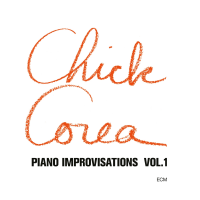
by Joshua Weiner
Blue Note. Verve. Impulse! Prestige. Just saying the name of such storied jazz record labels immediately conjures up each one's distinct aesthetic, from the music to the cover art. Over the past half century, the German ECM label has earned its place in this pantheon by steadfastly following its own vision, perhaps best summed up by ...
Barbara Bruckmüller Jazz Orchestra, feat. Aruán Ortiz: A Chain of Moments
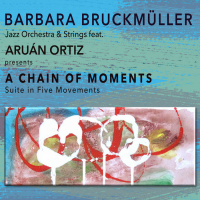
by Artur Moral
Julio Cortázar's Rayuela (1963), Mark Z. Danielewski's House of Leaves (2000) and Chris Ware's Building Stories (2012) are novels--both written and graphic--that stand out, not just for their literary merit, but also for the various ways readers can engage with them. A similar phenomenon occurs on the listening level with A Chain Of Moments: Suite in ...
The Master of Drums: Gene Krupa and the Music He Gave The World

by Richard J Salvucci
The Master of Drums Elizabeth J Rosenthal 320 Pages ISBN: 978-0-8065-4320 Kensington Publishing Company 2025 In the interests of full disclosure, I spent an extended period with Gene Krupa as an adolescent. Relatives were friends of Krupa's. All the nice things Elizabeth J. Rosenthal says about Krupa as a ...
Gravity and Resurgence: The Many Dimensions of Dexter Gordon

by Arthur R George
Long Tall Dexter; swinger, bebopper, saxophone balladeer; acting the dissipated genius expatriate who was not unlike himself in the movie Round Midnight; his dressed-up persona “Society Red;" the laconic elder statesman of his later years. Dexter Gordon is all those things, but more than a kaleidoscope of caricatures. Those who trace their lineages through ...
Sarah Hanahan, Samara Joy, Jenny Scheinman, Mavis Pan, Dwayne Clemons, Tania Grubbs, Diane Marino & More

by Mary Foster Conklin
This broadcast includes new releases from Sarah Hanahan, Samara Joy, Jenny Scheinman, Mavis Pan, Dwayne Clemons, Bill Charlap, Tania Grubbs and Diane Marino, with birthday shoutouts to Lakecia Benjamin, blues foremothers Victoria Spivey (Got The Blues So Bad) and Nellie Lutcher (He's A Real Gone Guy), vocalists Amy London, Anita O'Day, Esperanza Spalding, Laura Nyro and ...
Dwayne Clemons: Center of Gravity: Live at Smalls

by Pierre Giroux
Copenhagen-based trumpeter Dwayne Clemons is an accomplished musician whose US career trajectory hit a speed bump in the 1990s when he was incarcerated for a narcotics conviction. Fortunately, he caught the attention of pianist and club owner Spike Wilner who encouraged him to come to New York to play. In time, the result was that, in ...
Remembering Dan Morgenstern

by Sanford Josephson
This article previously appeared in Jersey Jazz Magazine. In 1938 when Dan Morgenstern was eight years old, he and his mother fled Nazi-controlled Austria for Copenhagen. Nine years later, they arrived in New York, and Morgenstern was not interested in seeing the Statute of Liberty or the Empire State Building. He just wanted to ...
Russell Malone: Guitar Master

by R.J. DeLuke
This article was first published on All About Jazz on February 29, 2016. “People make too big of a deal about being self taught. Because nobody is completely self taught," ruminates Russell Malone, one of the best loved jazz guitarists by both fans and critics. His sound is full and rich; his fingers fleet,the ...
Backgrounder: The Strolling Mr. Eldridge, 1953

In December 1953, trumpeter Roy “Little Jazz" Eldridge recorded The Strolling Mr. Eldridge for Norman Granz's Clef label. Eldridge was a member of Granz's Jazz at the Philharmonic tour and recording group of all stars. The album was released during the “speed wars," when Columbia's 33 1/3 and RCA's 45 rpm formats were in fierce competition. ...

